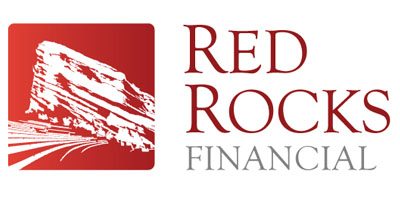It can be scary to use a credit card again after paying off a lot of debt. This simple strategy could make it easier.

If you’ve used a balance transfer credit card to get out of debt, you might remember how you felt the moment you saw the balance on your original card hit ”$0.”
It can be a big relief to pay off your balance in full, but many people who have gotten out of debt with a 0% APR credit card find it’s pretty easy to get pulled back into the debt cycle when the promotional period is over.
You can blame it on science: When you swipe your credit card, your brain might not even recognize it as “real,” according to Dan Ariely, chief behavioral economist at Qapital. Your body experiences a pain signal with every financial transaction, and the signal is “very, very low with credit cards and higher with cash,” Ariely explains.
This means you don’t fully register a credit card transaction as “real money” until you pay your balance at the end of the month. But by then, it might be too big to pay all at once, putting you right back in the cycle of “credit creep.”
Below, CNBC Select spoke with two people who paid off five-figure credit card debt and now maintain a $0 balance — even while regularly using their credit cards. They share how they paid off their debt and some tips for keeping their balances low.
Should I use a credit card again?
Lana, a 39-year-old project manager who paid off $16,000 in credit card debt, was a little nervous to go back to using her credit card again after carrying a balance of at least $1,000 for over 10 years.
But after she used a no-fee balance transfer card to pay off her old credit card, Lana decided she didn’t want to miss out on travel rewards simply because she had debt in the past. She opted to apply for one of the Chase Sapphire cards and learned how to use it for everyday spending without paying a penny in interest.
Some people cut up their credit cards for good after becoming debt-free. “I’m not that hardcore,” says Lana.
Instead, she pays off her credit card balance two to three times per week so she always knows how much she owes and can make sure she has enough in her checking account to cover her bill.
Every three days, Lana logs into her Chase Mobile App and pays off her credit card balance so that she sees her money being withdrawn from her checking account for almost every purchase.
“I like to feel the pain,” she jokes, but acknowledges that paying off her card almost as soon as she uses it helps her spend within her means.
Using this strategy, she is more likely to see a positive account credit show up on her credit card statement than a negative balance.
Staying on top of your spending
Michael Lacy, blogger and founder of Winning to Wealth, paid off $21,000 in credit card debt between 2014 and 2016. Now he and his wife hold themselves accountable for every single purchase.
“We pay our bill immediately,” Lacy explains. “We went to Costco, for example, and paid the bill on the phone as soon as we got in the car.”
By taking note of their expenses in real time and tracking every dollar that comes out of their checking account, Lacy and his wife ensure they have the budget for what they buy. As a result, they get to travel more than they ever did before (since they’ve lowered their other expenses this way), and they also never miss a payment.
You can use this strategy whether you use the co-branded Costco Anywhere Visa® Card by Citi or one of the most popular cash-back credit cards with no annual fee, the Citi® Double Cash Card. It basically works with any credit card you use, and it’s even more accessible if your card issuer offers a comprehensive online banking app like the Chase Mobile App, which comes with cards such as the Chase Freedom®.
Improving your credit score
Treating your credit card like a debit card not only helps you manage debt; it can also raise your credit score. On-time payments account for the largest percentage of your credit score, but another added benefit to this approach is its impact on your credit utilization rate.
Your credit utilization rate, or CUR, is another one of the key factors that make up your credit score. Experts recommend your CUR stay below 30%, with some suggesting it should be below 10%.
Each one of your card issuers reports your CUR to the credit bureaus roughly once every 30 to 45 days, so it can be hard to guess exactly what kind of “snapshot” they will get. But paying off your balance more than once per month makes it more likely that you’ll have a lower CUR when the bureaus review your information.
Bottom line
Using a 0% APR credit card to do a balance transfer is one of the best ways to get out of credit card debt — but it’s just one of many steps. Before you do it, it’s worth learning how to make the most of yours by understanding exactly how they work.
But most important, you should also consider how to adjust your spending habits so you can one day use a credit card with confidence. Some people cut up their old credit cards or put them away in a drawer to avoid overspending, but if you don’t want to miss out on travel rewards or cash back, you can give this strategy a try.
Information about the Chase Freedom® has been collected independently by CNBC and has not been reviewed or provided by the issuer of the cards prior to publication.
